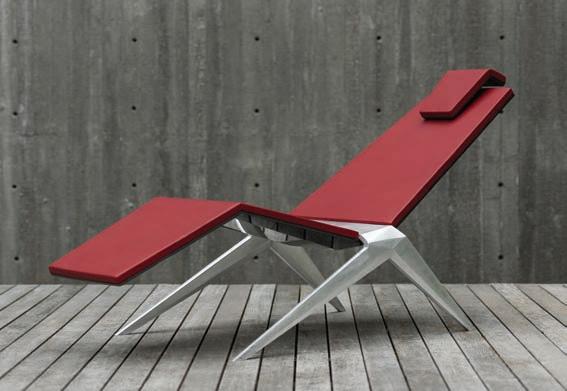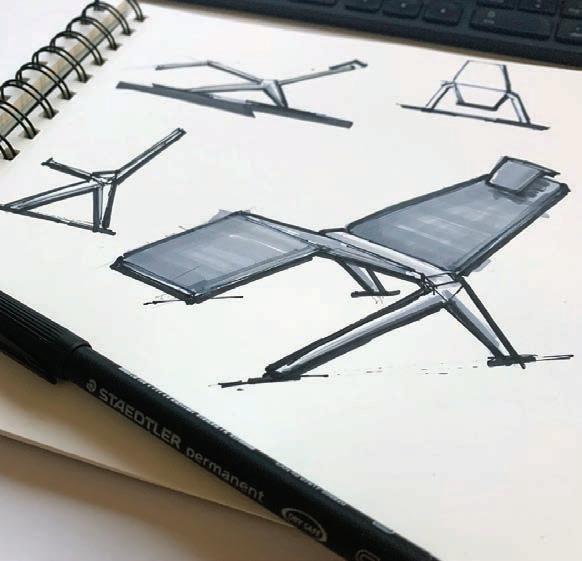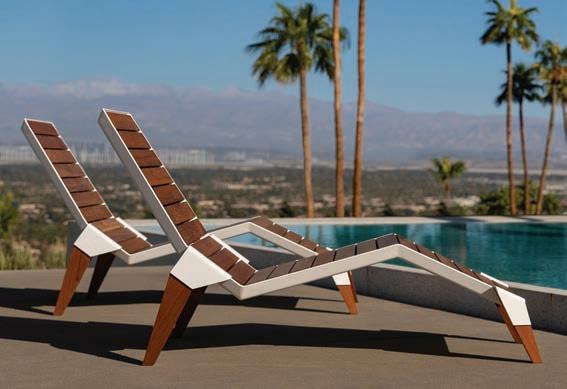
3 minute read
FURNITURE SMITH
AWARD-WINNING DESIGN
Good design creates an emotional response with end users.
Advertisement
Cameron’s passion for furniture design can he traced back to his days as an Industrial Design and Mechanical Engineering student at the University of Washington. Numerous elegant and functional designs including lighting, tables, and chairs, defined his early start, but like many in the industry, his career did not travel a direct route.
Cameron departed Washington for Stanford in 1996, where he studied under David M. Kelley to earn a Master’s degree of Engineering in Product Design. Now referred to as the d.school, Stanford’s design program has earned a reputation as one of the world leaders in teaching “Design Thinking.” His Master’s thesis on cordless environments allowed him to challenge interaction with products that work without being tethered to a cord. His work culminated in a translucent desk with a curved surface that he still uses to this day.
Returning to Seattle, Cameron founded Product Creation Studio, a consulting firm specializing in medical technology. For the next two decades his business flourished, while his dreams of furniture design remained at bay. Then in 2019, a polo injury to his neck caused Cameron to give pause. His injury made it impossible to work or play polo, but it did offer him time to pull out his sketchbook and return to his passion for designing furniture. A few years of sketching ensued, as did the inspiration to turn his designs into reality.
Inspiration
As many artists will attest, inspiration can strike at any time. For Cameron, the inspiration for his design is often born from a feeling, a pose, or an experience. The Good Day Chaise, for example, was inspired by a past girlfriend, who was a talented rock musician. While spending time in the music studio as she worked in collaboration with other artists, inspiration struck Cameron to design a chaise. The goal for the end user was experiential: to feel and absorb the music from a comfortable, reclined position.

The physical form of the chaise came to have slender and light characteristics, yet the construction behind the piece was solid and heavy, like the music that inspired it. In the same way that artists and musicians collaborate and complement one another, the contrasts represented by the chaise are both commanding and elegant.

Another of FurnitureSmith’s award-winning designs is the Arms Lounger, which takes inspiration from one of Cameron’s favorite California destinations: Santa Monica. One sunny afternoon, Cameron was sketching near the Santa Monica pier when he observed a couple relaxing on a nearby patch of grass. Their arms were stretched out behind them, and they were leaning back with their knees bent. It struck Cameron as a comfortable pose for a relaxing and social afternoon by the ocean: “It was an intriguing position that also seemed very natural, and very cool. I was inspired to create a chair that mimicked that form, as well as the emotion and social interaction it evoked.”


Process
Once inspiration strikes, Cameron’s sketches quickly take shape. A friend going through cancer relayed to him how comforted she felt when her family visited and embraced her. Cameron responded with sketches of a chair designed to hug users when sitting in it. In the case of the Good Day Chaise, his drawings were complete in just one day during his visit to the music studio and he had a 3D printed scale model within a week.
The next step of the design process uses software to create a 3D model of the concept. At this stage, a design brief is also created, in which Cameron explains his inspiration, the features of the piece, the details of its form, market research, and more. The design brief creates a vision of the chair that guides the development process going forward.
Creating a full-scale ergonomic model is an important phase of the overall process. While the model is not necessarily made from end-user materials, the mock-up allows Cameron to finesse the angles, details, and physical features of the piece, including the seat angle, lumbar position, arms, and legs.
Once Cameron is satisfied with the mock-up, the design is passed on to the mechanical engineering team at his firm. The engineers design the parts and functional components, source the materials, and create the first functional prototypes that ultimately lead to production. From beginning to end, it can take up to a year to engineer and develop each unique piece. Dedication to the design, and assistance from his team are essential to the process of moving from inspiration to a completed product.










